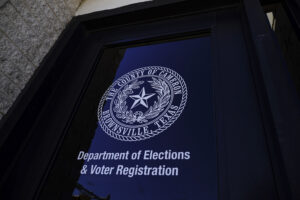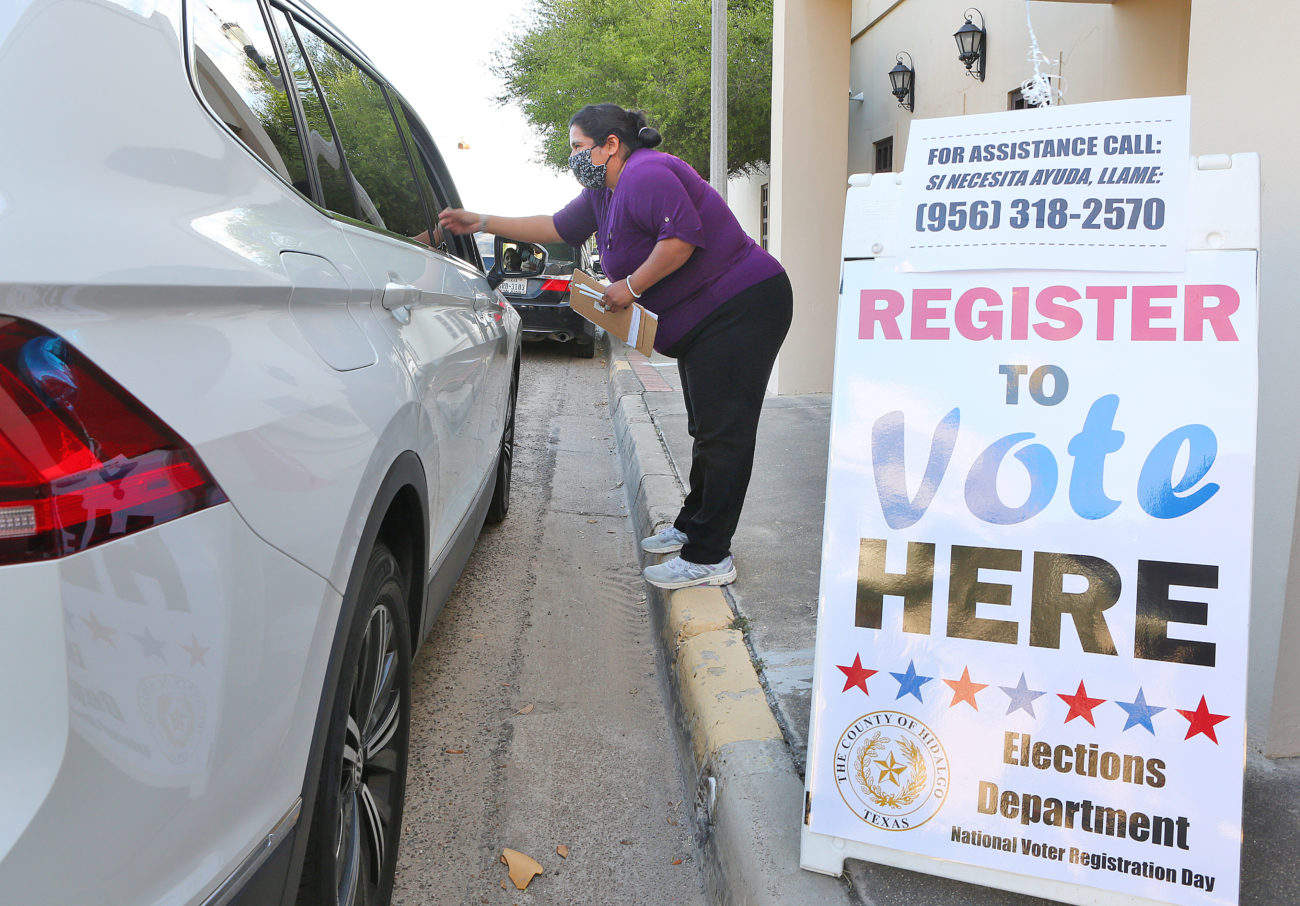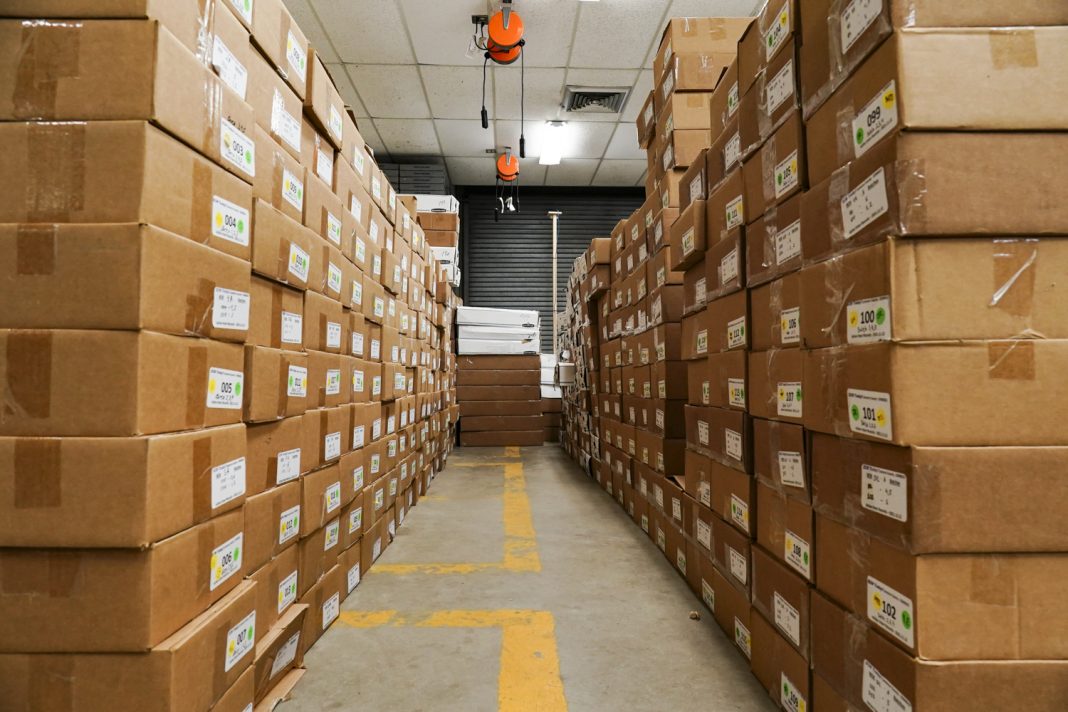|
Only have a minute? Listen instead
Getting your Trinity Audio player ready...
|

With voter registration on the rise, Valley election officials are expecting a strong turnout on Election Day due to a rise in voters here and a hotly contested presidential election.
As it stands, there are currently 443,574 registered voters in Hidalgo County and 237,141 registered voters in Cameron County. While those numbers have gradually increased through the years, they don’t necessarily translate to polling numbers.
“It is who or what is on the ballot that does drive the vote,” Hidalgo County Elections Administrator Hilda Salinas said. “We are hoping that we do have high voter turnout numbers for the presidential election. Of course, it does garner a higher voter turnout being that it is a presidential election, so we encourage voters to get out and vote.”
This year’s election features the highly contentious race between Vice President Kamala Harris and former President Donald Trump, as well as numerous contested races across the Valley on the state and federal levels.
Officials hope that the growing interest in those and other local races will drive more voters to the polls next month.
“We expect to see a lot of people from Cameron County showing up to the polls,” Cameron County Elections Administrator Remi Garza said.
Election administrators are optimistic about voter participation. Both counties saw an increase in voter participation in the last two presidential elections.
The 2016 presidential race saw a total of 338,990 registered voters in Hidalgo County and 197,726 registered voters in Cameron County. Those elections resulted in a total of 176,160 ballots (52% of registered voters) cast in Hidalgo County, and 93,716 ballots cast (47% of registered voters) in Cameron County.
This graphic shows how the Valley voted in the 2016 presidential election. (Emily D'Gyves | The Monitor)
In 2020, the number of registered voters grew to 392,604 registered voters in Hidalgo County, and 218,661 registered voters in Cameron County. That election saw a total of 222,593 ballots cast (57% of registered voters) in Hidalgo County and 115,639 ballots cast (53% of registered voters) in Cameron County.
This graphic shows how the Valley voted in the 2020 presidential election. (Emily D'Gyves | The Monitor)
Garza is hoping to at least keep the status quo for this year’s election.
“My anticipation is that at the end of the process, we’ll see about 115,000 to 125,000 people cast ballots this presidential cycle,” he said. “We’ve seen an increase in voter registration figures. The activity from our volunteer deputy registrars is increasing. So we’re real excited about the energy that’s being generated out in the community for this election.”
The bump in the number of registered voters is something that officials are noticing statewide. On Tuesday, the San Antonio Express-News reported that the state of Texas has surpassed 18 million registered voters.
Increasing voter registration could be indicative of the hoopla permeating from the presidential race.
“I think there’s some interesting stuff going on here,” Mark Kaswan said.
Kaswan has been teaching political science for 14 years, including 13 years at the University of Texas Rio Grande Valley. He said that he is surprised by the growing popularity of former President Donald Trump in the Rio Grande Valley.
He said that his popularity has largely contributed to the growing number of registered voters in the region.
“I went back to 2014, and in the last 10 years, registered voters have gone up from 321,000 to 431,000 (in Hidalgo County) — over 100,000 more voters in the last 10 years which is pretty tremendous,” Kaswan said. “In Cameron County, it’s increased, actually, a similar amount if you consider the fact that Cameron County is half the size of Hidalgo County.”
Cameron County has seen a boost of nearly 40,000 new registered voters since the 2016 election. Kaswan said that a large number of those voters are voting Republican.

“What you’re seeing is actually that a lot of those new voters appear to be voting Republican, at least in the presidential race,” he said. “I think a lot of it has to do with a couple of factors.”
One of those factors, according to Kaswan, is the heightened attention to the Rio Grande Valley in recent years after being mostly ignored due to the overwhelming Democratic support. That has seemed to shift over the last 10 years.
“I think the Republicans in 2016 were expected to get creamed, frankly, and the Democrats expected that as well in 2016, but it didn’t happen,” Kaswan said. “I think what Republicans realized is that there was more potential in the Valley than they thought, so they started putting more resources in here.”
During the 2016 Presidential Election, Trump received 48,642 votes, or 28% of the total votes, in Hidalgo County. His opponent, Hillary Clinton received 118,809 votes, or 68% of the total votes. In Cameron County, Trump received 29,472 votes, or 32% of the total votes, and Clinton received 59,402 total votes, or 64%.
While the number of voters who supported the Democratic Party grew slightly in 2020, there was a distinct boom in the number of voters who supported the Republican Party in the Rio Grande Valley.
In Hidalgo County, Trump received 90,527 total votes, or 41% of the total votes — nearly doubling the number of votes from the previous election. President Joe Biden received a total of 128,199 votes, or 58%.

In Cameron County, Trump received 49,032 total votes, or 43% of the total votes. Biden received 64,063 total votes, or 56%.
Kaswan said that the political shift is also evident when looking at the number of local candidates’ political affiliations over the years. He recalled a primary election 10 years ago that had 57 local candidates, of which only two were running as Republicans.
“For decades, the Valley has been seen as sort of this Democratic region, and so Republicans weren’t even running for office,” Kaswan said. “If you are a Republican voter, like, why bother, right?”
According to Kaswan, the Rio Grande Valley has one of the lowest voter turnout rates in the state. Additionally, Texas as a whole has had very low voter participation. He said that another factor is that Latinos have traditionally lower voter participation rates than any other ethnic group.
“It’s just really interesting to me that we’re seeing this big growth in registered voters, and those registered voters turn out to be more likely Republican than Democrat,” Kaswan said. “Although, if you look at those totals, both parties saw an increase. Both the Republicans and the Democrats saw an increase in the number of votes cast, but Trump saw a larger increase than the Democrats.”
Ultimately, getting people to not just register to vote, but also cast their ballots will depend on whether voters feel that they can impact an election.
“It’s all about whether people feel like their votes matter, and people feel like their votes matter more when you’ve got competitive elections,” Kaswan said.
With the deadline to register to vote on Monday, and early voting set to begin on Monday, Oct. 21, officials are preparing for the continued growth in voter participation in the region.
“I’m hoping that we’re going to see a higher turnout percentage overall this election cycle,” Garza said. “We have noticed the trend of more and more participation each election cycle. So we’re excited at where the patterns are heading.”




